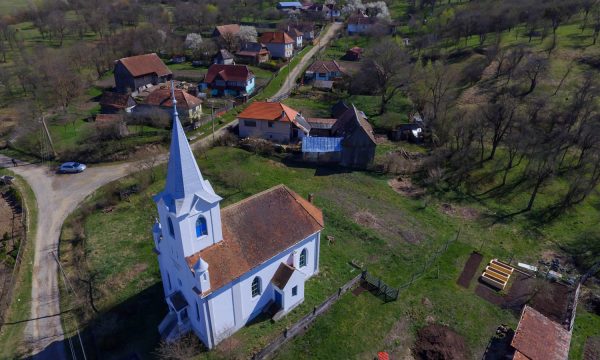Legend
Based on a folklore collection from the end of the 20th century, an oral tradition was kept alive within the Kulcsár family, who were originally from Vasileni (Hu: Homorodszentlászló), that they were the descendants of the steward of the Saint King. There is a related legend from Bágy, that tells the story of the king, still a prince at that time, having participated at the wedding of one of the members of the renowned Sándor family. According to recent research, this legend can be traced back to the Csíki Székely Chronicle, considered to be authentic, to whose text it was presumably added from the oral tradition of Szeklerland. The Csíki version of this legend mentions this royal visit in relation to Mikó, who built the Mikó Castle in Csíkszereda: „And he loved him [Saint Ladislaus] so, that upon visiting Transylvania, he went beyond the land of Vatsárk to István, and betrothed Kata, his daughter born from Szilvási Erzsébet, to Mikó Pál, and at the wedding he himself drank with joy from the ’Cup of the Nation’.”
Natural Heritage
Vasileni village belongs to Ulieș (Hu: Kányád) commune. The nearby Porumbeni Natura 2000 (ROSCI0357) site made this list because of its large forests which are home to many species. In the beech, oak and hornbeam forests live two large carnivores, the gray wolf (Canis lupus) and the brown bear (Ursus arctos), both protected species.

Bats are also numerous in the area. They are not widely known since usually only the hikers caught unaware by the dusk will see them, or those who stumble upon their daytime shelters. The greater mouse-eared bat (Myotis myotis), the lesser mouse-eared bat (Myotis blythii) – one of the largest bats in Europe –, the lesser horseshoe bat (Rhinolophus hipposideros) and the barbastelle (Barbastella barbastellus) are the bat species of the area. Similarly to migratory birds, both the lesser and greater mouse-eared bats usually winter in more southern locations, which can be up to 200–300 km away from their summer residence.
These bats are protected not because they are rare to find, as they are present in many places, but because of their decreasing numbers. In Europe, the lesser horseshoe bat and barbastelle populations are the lowest, due to the disappearance and transformation of their habitats. The increasing popularity of cave tourism and the demolition and renovation of old buildings are some of the danger factors for these species.

The pools and lakes of the area can also showcase their own wildlife, if only one takes the time to observe them. For example, sharp eyes may discover the northern crested newt (Triturus cristatus) and the smooth newt (Lissotriton vulgaris ampelensis) in the undergrowth. These protected amphibians are a rare sight in the Transylvania region. The males of the northern crested newt grow jagged crests on their backs during the breeding season. The underside of the smooth newt is spotted from neck to tail, while the crested newt’s spots stop at their tail’s beginning. Human carelessness is the main reason of their endangerment. Sometimes found in the shallower parts of lakes, close to the banks, they mostly frequent the more temporary puddles. The destruction of wetlands and predatory fishes have both decreased their population. The owners of fishponds could try keeping their waters free of carnivorous fish and the edges of these ponds rich in vegetation in order to help these newts to survive and recover.
